10 most confusing tech jargons
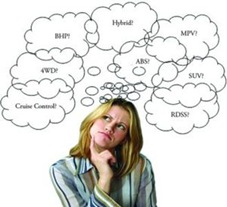 Those tech jargons confuse you often? You are not alone. A recent survey reveals that aimed at breaking the walls of ‘techno babble’ shows that many technology words perplex users leaving them scratching their heads.
Those tech jargons confuse you often? You are not alone. A recent survey reveals that aimed at breaking the walls of ‘techno babble’ shows that many technology words perplex users leaving them scratching their heads.
According to Alex Watson, editor of Custom PC magazine, a reason contributing towards the complexity of technology terms is that many companies tag different names on similar products, adding to the confusion. He says, "Some names are just made up for marketing purposes, while others are chosen so users can relate to the term."
The survey, conducted by Gadget Helpline, reveals top 10 most confusing technological terms.
======================================================
1. Dongle
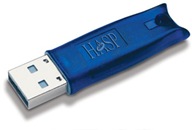 One of the commonly used word which often confuses many users is Dongle. A Dongle is like a small USB drive that connects to a computer to run a software in a secured manner. It is used as a high-end form of security to prevent the unauthorised copying of software.
One of the commonly used word which often confuses many users is Dongle. A Dongle is like a small USB drive that connects to a computer to run a software in a secured manner. It is used as a high-end form of security to prevent the unauthorised copying of software.
Today's dongle technology makes use of a computer's USB port, plugging in just like a portable flash drive. The software then sends an encrypted request to the dongle for a validation key, which is also encrypted. This means that in order to crack the dongle, one must first crack the encryption. Doogle was used in 1980 for the first time on Wordcraft programme.
======================================================
2. Cookie
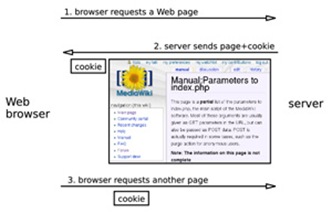 Cookie is another term which baffles people. Cookies are defined as small pieces of text stored on a computer's web browser. They basically store user's settings, shopping cart contents, or other data used by the websites.
Cookie is another term which baffles people. Cookies are defined as small pieces of text stored on a computer's web browser. They basically store user's settings, shopping cart contents, or other data used by the websites.
In simple terms, it is a message given to a Web browser by a Web server. The browser stores the message in a text file. The message is then sent back to the server each time the browser requests a page from the server.
As for the purpose they serve, Cookies are a great help in preparing customised Web pages for them. They are used for authenticating, session tracking and maintaining specific information about users like site preferences.
So in simple terms cookies are used by Web servers to differentiate users and to maintain data related to the them during navigation. Most browsers now allow users to decide if they want to store cookies or not.
======================================================
3. WAP
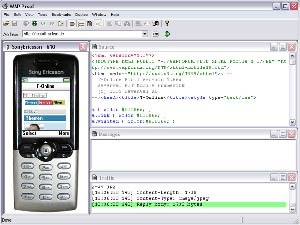 Another common and confusing term is WAP. An abbreviation for Wireless Application Protocol, WAP allows users to access information via handheld wireless devices such as mobile phones, pagers, two-way radios, smartphones and communicators. In simple terms, its main use is to enable access to the Internet (HTTP) from a mobile phone or PDA.
Another common and confusing term is WAP. An abbreviation for Wireless Application Protocol, WAP allows users to access information via handheld wireless devices such as mobile phones, pagers, two-way radios, smartphones and communicators. In simple terms, its main use is to enable access to the Internet (HTTP) from a mobile phone or PDA.
WAP supports most wireless networks including CDPD, CDMA, GSM, PDC, PHS, TDMA, FLEX, ReFLEX, iDEN, TETRA, DECT, DataTAC, and Mobite. It also supports all major OSes.
A WAP browser provides all of the basic services of a computer but operates within the restrictions of a mobile phone, such as its smaller view screen. WAP though supports HTML and XML, the WML language (Wireless Markup Language) is specifically devised for small screens and one-hand navigation without a keyboard.
======================================================
4. Phone jack
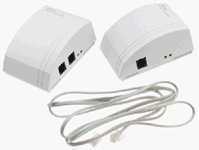 A telephone plug or phone jack is a connector used to connect a telephone to the telephone wiring in a home or business, and then in turn to a local telephone network.
A telephone plug or phone jack is a connector used to connect a telephone to the telephone wiring in a home or business, and then in turn to a local telephone network.
The plug is inserted into a telephone jack fixed to a wall or baseboard. The standard for telephone plugs varies from country to country. However, RJ11 modular connector is the most common type used in most countries.
======================================================
5. (Nokia) Navi Key
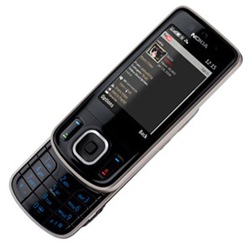 The Navi Key is a concept which significantly reduces the number of keys on the phone's keypad. Nokia was the first company to launch a handset featuring a Navi Key in the year 1997.
The Navi Key is a concept which significantly reduces the number of keys on the phone's keypad. Nokia was the first company to launch a handset featuring a Navi Key in the year 1997.
The user interface of the phone is designed to follow the intuitive logic of the user. The phones equipped with the Navi Key can perform most of the function by just pressing the Navi Key.
Nokia 3110 was the first phone to sport a Navi Key menu navigation system. Later the Navi Key was incorporated on other Nokia handsets, especially the entry-level models such as Nokia 1100.
======================================================
6. Time shifting
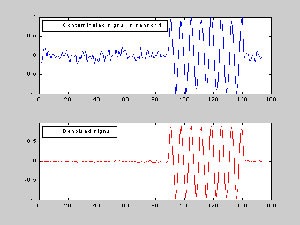 Another most confusing tech jargon is Time shifting. It is a process of recording and storing data for later viewing, listening, or reading. In television, time shifting can be done with a device called a personal video recorder (PVR) or a computer with a TV tuner card.
Another most confusing tech jargon is Time shifting. It is a process of recording and storing data for later viewing, listening, or reading. In television, time shifting can be done with a device called a personal video recorder (PVR) or a computer with a TV tuner card.
But now with the advent of the digital video recorder (DVR) the process has become much easier by using a electronic programme guide and recording shows onto a hard disk.
Earlier, videocassette recorders (VCRs) were used for recording data.
======================================================
7. Digital TV
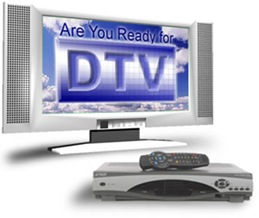 Digital television (DTV) is the sending and receiving of moving images and sound by discrete digital signals, in contrast to the analog signals used by analog TV.
Digital television (DTV) is the sending and receiving of moving images and sound by discrete digital signals, in contrast to the analog signals used by analog TV.
One of the most significant advantages of DTV is that digital channels take up less bandwidth. This means that digital broadcasters can provide more digital channels in the same space, provide high-definition television service, or provide other non-television services such as multimedia or interactivity.
DTV also offers special services such as multiplexing (more than one programme on the same channel), electronic programme guides and additional languages, spoken or subtitled. In India, Reliance and AirTel are the two players with their Direct-To-Home (DTH) satellite TV service.
Digital television supports many different picture formats defined by the combination of size, aspect ratio (height to width ratio) and interlacing. High-definition television (HDTV) is one of the format that can be transmitted over DTV.
======================================================
8. Ethernet
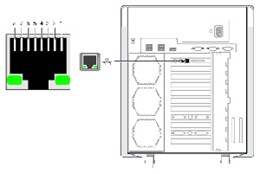 Ethernet is the local area network (LAN) technology. The technology was originally developed by Xerox for the Palo Alto Research Center Aloha network and later developed further by Xerox, DEC and Intel.
Ethernet is the local area network (LAN) technology. The technology was originally developed by Xerox for the Palo Alto Research Center Aloha network and later developed further by Xerox, DEC and Intel.
The most commonly installed Ethernet systems are called 10BASE-T and provide transmission speeds up to 10 Mbps. Devices are connected to the cable and compete for access using a Carrier Sense Multiple Access with Collision Detection (CSMA/CD) protocol. Ethernet is also used in wireless LANs.
100Base-T or Fast Ethernet supports data transfer rates of 100 Mbps and the Gigabit Ethernet supports data rates of 1 gigabit (1,000 megabits) per second. 10-Gigabit Ethernet provides up to 10 billion bits per second.
======================================================
9. PC Suite
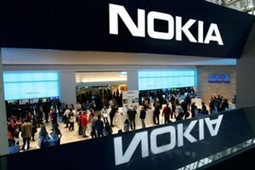 Another jargon that often stumps people is PC Suite. Wikipedia defines PC Suite as a software package used to establish an interface between Nokia mobile devices and computers that run Microsoft Windows operating system.
Another jargon that often stumps people is PC Suite. Wikipedia defines PC Suite as a software package used to establish an interface between Nokia mobile devices and computers that run Microsoft Windows operating system.
It can be used to transfer music, photos and applications. It can also be used to send Short Message Service (SMS) messages or act as a modem to connect the computer to the Internet. Nokia PC Suite is a proprietary software item and is required to access certain aspects of Nokia handsets.
======================================================
10. Desktop
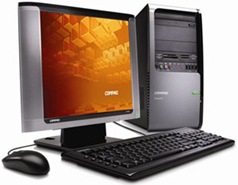 A desktop computer is a personal computer that is designed to fit on top of a typical office or home desk. It is intended for regular use at a single location, as opposed to a mobile laptop or portable computer.
A desktop computer is a personal computer that is designed to fit on top of a typical office or home desk. It is intended for regular use at a single location, as opposed to a mobile laptop or portable computer.
A desktop packs several units that are connected together during installation including processor, display monitor and input devices like keyboard and mouse. Now-a-days almost all desktop computers include a built-in modem, a CD-ROM drive and a multi-gigabyte storage drive. Desktop computers can be interconnected and can share resources such as printers by being connected to a local area network (LAN).
One advantage that Desktops have over laptops is that there spare parts and extensions are standardised.
source: TOI